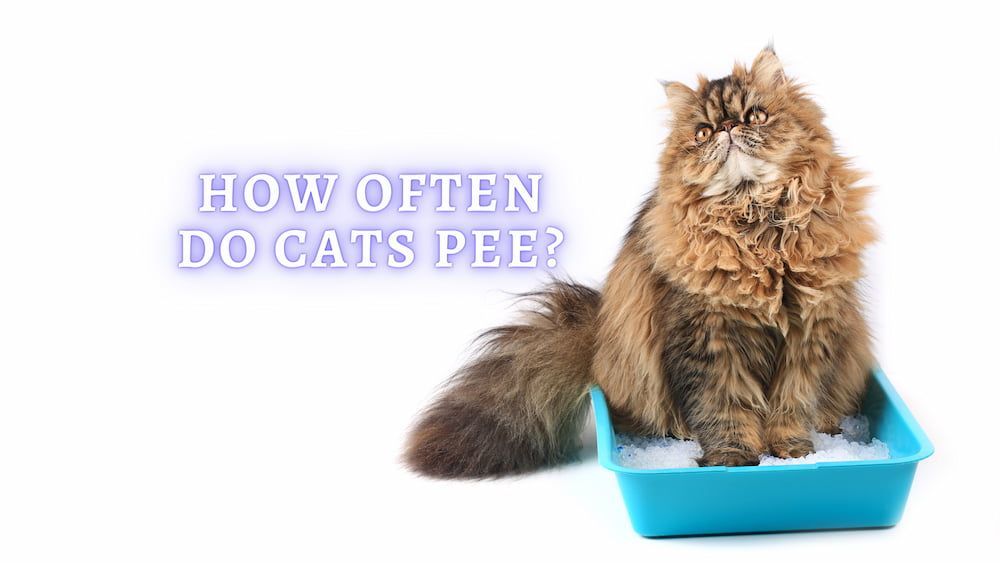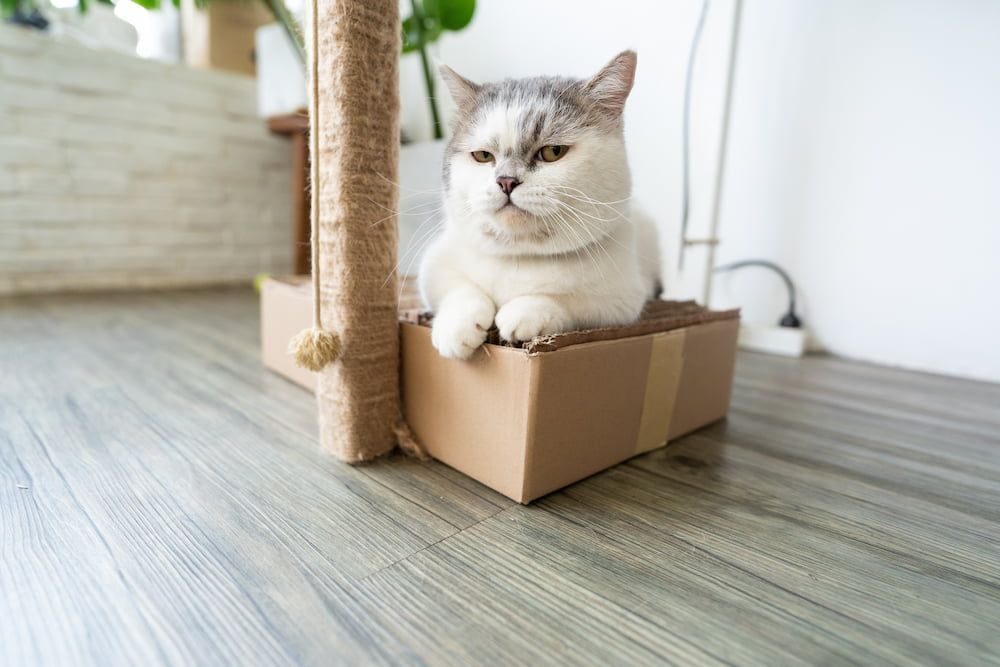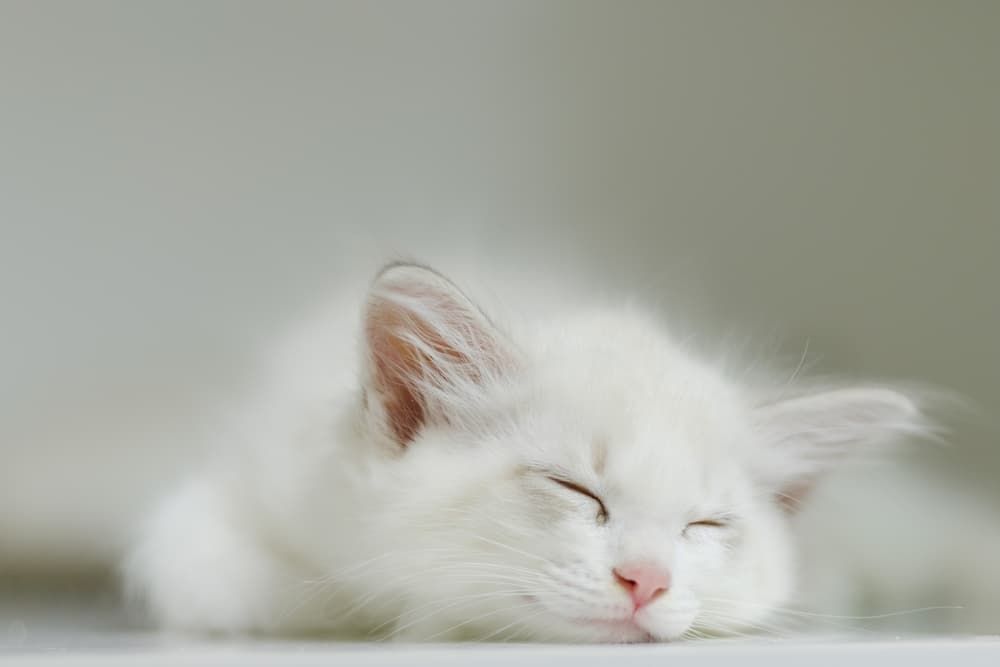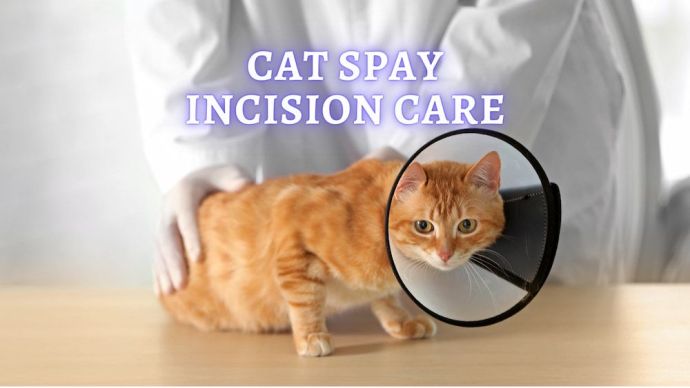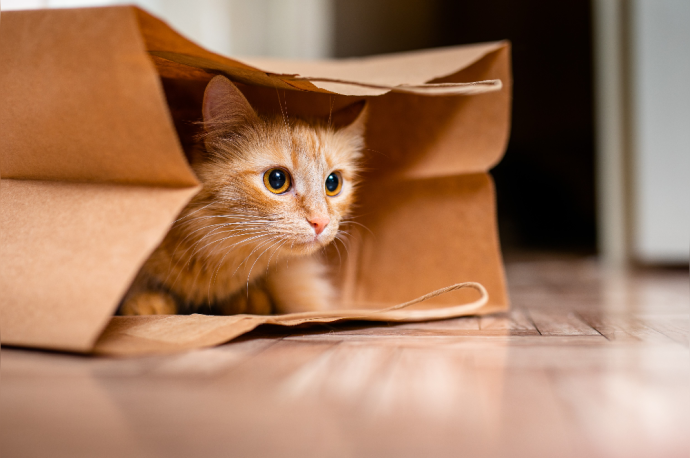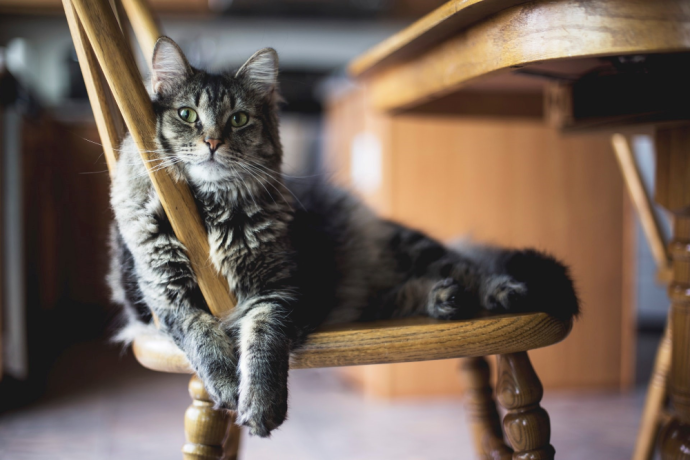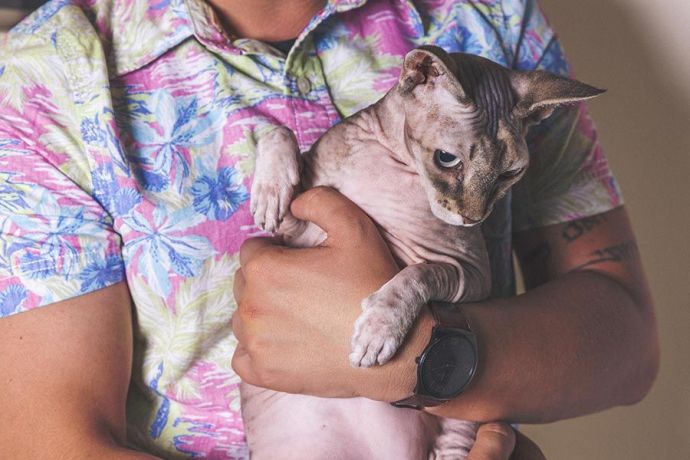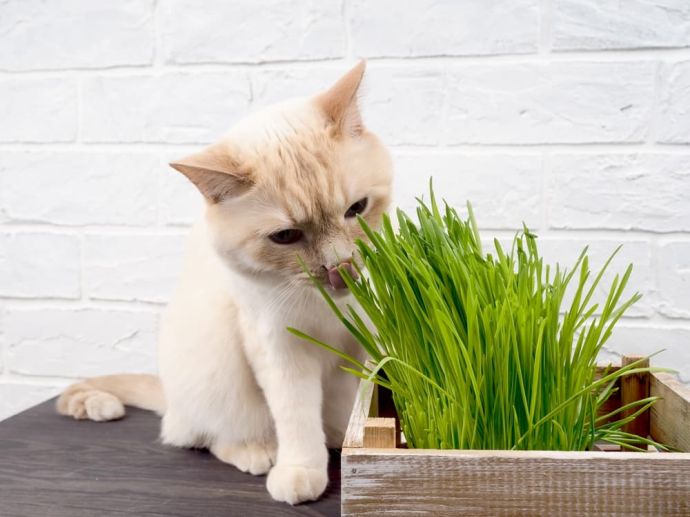How Often do Cats Pee? And How Often do Cats Pee Daily?
Written by:
Author: Carol Young
Carol has worked in specialty, emergency, mixed animal and general veterinary practices, and enjoys all aspects of veterinary medicine. Her special areas of interest include anesthesia, critical care, emergency, dentistry, internal medicine and small animal nutrition.
View all 62 articlesLearn about our editorial process and veterinary review board.
Viewed: 6870
Updated on: 07/21/2021
Being a cat owner involves not only providing a warm, loving home for your feline friend but making sure that she is healthy, happy, and gets plenty of attention. Part of taking care of your cat also means paying attention to her eating and drinking habits, her play activities, and even her litter box habits. When doing litter box detail, some owners may wonder if their cat is urinating enough, too little, or too much. This article will try to answer the question of how often do cats pee?
Before delving into this subject, we will first look at several factors that influence felines urinary habits.
How to Monitor Your Cat’s Pee
To find out how often cats urinate, it’s good to know what is normal and what is not. If you use clumping litter, it’s easy to know how many times your furry friend pee and roughly how much because the urine is nicely contained in clumped, litter balls. With clumping litter, the average adult cat produces 2-3 clumped urine balls per day. If you use the regular absorbent litter, you can note how many wet spots there are and their relative size. If you have more than one cat, and more than one litter box, you can try to estimate the amount of pee produced daily by simply dividing the number of urine spots divided by the number of cats.
How Much Pee is Normal?
The answer to this question is: It depends. The amount of urine your cat produces depends on several factors:
- How much water your cat drinks. If you have the one who is a big drinker, she is going to pee more.
- How much canned/moist food she eats. Cats that eat dry food tend to visit the litter box less often than those that eat wet food.
- How old your cat is, and if she has any underlying medical issues. For example, if she is diabetic or has renal disease, she will drink and pee more often. Diabetic felines urinate more because the kidneys filter excess blood sugar, which leads to increased thirst and pee times. Renal disease causes cats to urinate more because the kidneys cannot efficiently concentrate urine, so these cats will drink a lot, and as a result, causing an increase in peeing.
- Humidity. Pets who live in drier climates with low humidity will tend to drink more than those who live in humid climes. The reason is that when humidity levels are low, more water vapor is lost through respiration, causing an increase in thirst and urination.
It is also important to note that each cat is different and that it’s a good idea for owners to monitor their kitty’s daily habits and their litter box routines. Most owners who clean litter boxes regularly will be able to spot changes in urination frequency by counting the number of “clumps,” or amount of soiled litter they are scooping from the litter box.
One study, reported by DVM 360,[1] indicated healthy cats produce an average of 28 ml/kg of urine every 24 hours, which is about one-half cup (118mls) of urine a day for the average 10 pounds (4.5kg) feline.
READ MORE: How Long Can a Cat Go Without Water?
How Many Times do Cats Pee Every Day?
The answer to this question is also: It depends. Factors that influence daily urination frequency include the age, and if your pet has any underlying medical conditions. Some factors are discussed below.
Age
- Kittens. Young kittens visit the litterbox more frequently than older cats (most often every time they eat), but this frequency usually decreases as they grow bigger.
- Adults. The average adult feline will urinate two to three times a day and poop once a day (or less, in some cases).
- Senior cats. They may pee more frequently than younger felines, simply because they may have underlying medical conditions such as renal insufficiency, hyperthyroidism, or diabetes.
Underlying Medical Conditions
As mentioned above, certain medical conditions can influence how often your pet pee. For example, conditions such as urinary tract infections, diabetes, and renal disease can cause an increase in the volume of urine you may find in the litterbox. These medical conditions should be carefully monitored by you and your veterinarian.
Most healthy, adult indoor cats will urinate at least two to five times a day. But, if you notice any dramatic changes in urination habits, contact your veterinarian and make an appointment to rule out any potential medical conditions.
READ MORE: Where to Put Cat Litter Box?
What Color of Pee is Normal?
When monitoring your cat’s urination habits, you may want to take note of the color. Normal cat pee should be a pale, straw-like yellow color, and the urine should not be cloudy or opaque. Changes in the color of pee, if it looks dark or too light, or contains dark floating debris are cause for concern and may be associated with a bladder or kidney condition. If you notice such changes, contact your veterinarian as soon as possible. Your veterinarian can conduct a urinalysis or a urine culture to determine the cause of urination changes.
What Scent of Cat Pee is Normal?
If you have a spayed or neutered cat, chances are that your feline’s urine smell isn’t very odiferous or strong. Normal urine typically has a slightly pungent, acidic scent that is not particularly offensive. However, if you have an unaltered tom (male) or female cat, their urine will smell much stronger and more acidic due to hormones excreted in the urine.
What Consistency of Urine is Normal?
Normal cat urine should not contain any debris, pale yellow color, and water consistency. It should not be thick or contain any debris. If you notice that your cat’s pee is very concentrated or thick in texture, contact your veterinarian. It may be a sign of dehydration or another medical issue.
What Are Some Other Signs of Abnormalities?
There are other things to look for in cat’s urine as well that may be signs of an issue:
- Blood. If you notice blood or a dark-colored-stained trail from the litter box across the floor, notify your veterinarian as soon as you can. Blood in the urine can sign a urinary tract infection (UTI), bladder stones, or blood clots. These conditions can cause inflammation and infection and could lead to the obstruction of the urethra, causing a potentially life-threatening inability to urinate. A urethral blockage can occur in just a few hours and must be treated medically as soon as possible.
- Colorless urine: Other changes to look out for are colorless pee. Pale, watery urine that is clear and colorless often indicates dilute urine, a possible sign of kidney disease or diabetes. If you notice a color or consistency change in your cat’s urine, contact your veterinarian.
- Urinating out of the box: Felines with UTI or renal disease will often time pee outside the litterbox. If your family friend is constantly urinating outside of the box, or next to it, consider contacting your veterinarian.
Abnormal Cat Urine Odor
Most owners are familiar with the smell of their cat’s urine, but many urine malodors are associated with bladder infections, bladder tumors, cystitis (inflammation of the bladder), or hormonal disorders, especially in overweight male cats. These conditions can also cause the urine odor to change dramatically and cause any owner to gag when cleaning the litter. In general, if you smell something unusual in the litterbox, contact your veterinarian.
READ MORE: How to Tell If My Cat Is Sick?
Things That Can Affect Cats Pee
There are several factors, including diet and environment, that can affect how often a cat urinates:
- Food. Wet foods have a high percentage of water, which can cause your family friend to urinate more frequently than if she eats dry food only. Also, some veterinary diets are specifically designed to dilute the pee and encourage a lower urine concentration. Incidentally, a feline’s normal prey (such as mice and rodents) is 70% water.[2] Dry food is about 5-10% water, and canned food is roughly 78% water. Evolutionarily speaking, cats are designed to have a lower thirst drive than dogs and are designed to get their water from their food.
- Age. As mentioned above, kittens tend to pee more frequently because they tend to drink more than adult cats, and because their bladders are smaller in size, so they urinate more often. Also, older kitties with medical issues or metabolic imbalances tend to drink and pee more than younger felines.
- Medications. Certain medications can also cause cats to urinate more frequently, including certain heart medications such as Furosemide, which is designed to draw excess fluid from tissues in the body. Steroids (anti-inflammatories), such as prednisolone, can also cause an increase in thirst and urination. If your furry friend is on medication that causes increased urine production and has questions, contact your veterinarian for more information.
- Stress. Stress and anxiety can also cause changes in urinary habits. For example, travel, exposure to a new living situation, or the addition of another cat or house member can cause anxiety in a cat, which in turn can cause such behaviors as hiding, and disinterest in eating, drinking, or using the litter box. Typically these cats will adjust in time, but if you notice that your kitty is not using the litter as often as she should, consult your veterinarian.
RELATED ARTICLE: How to Sedate a Cat Naturally?
FAQs
How Long Can Cats Hold Their Pee?
Most healthy felines may hold their bladders for 24-48 at most, however, this is not ideal. Most will urinate at least twice daily, unless they are in a new environment or traveling. As creatures of habit, and if they are in a strange environment or stressed, they may hide and not pee for a day or two. If you think that your kitty is stressed or has anxiety, and you are worried about infrequent urination, ask your veterinarian. Your veterinarian may be able to prescribe some anti-anxiety medication that could help.
How Often do Cats Pee and Poop?
As mentioned above, healthy adult felines normally urinate between two and five times a day, and in general, they should defecate at least once a day. Cats that stop eating for any reason will have less in their digestive tracts, so they may go less often. But if four to five days go by without evidence in the litter box, it’s time to be concerned. An average adult cat will poop once every 24 to 36 hours.
Why Is My Cat Not Peeing?
There are several reasons why your kitty may not be urinating, and all of these are considered medical emergencies. Some reasons include:
- FLUTD. Feline Lower Urinary Tract Disease (FLUTD) can interfere with normal urination in a cat. When you see that your cat can’t pee or is straining to urinate, you know she must be uncomfortable. Most often straining to urinate is usually due to cystitis (inflammation of the bladder), which can be very painful.
- Blocked Tom. The term “blocked tom” refers to an obstruction in the urethra (the duct through which urine passes from the bladder) and is a life-threatening emergency that demands immediate veterinary treatment. The obstructions can be caused by urine crystals, blood clots, or bladder stones that get caught and obstruct the urethra. This condition is called a block tom because it tends to happen more often in male cats because of the urethral anatomy differences.
- Bladder Stones. Bladder stones, also known as “uroliths,” are minerals, crystals, and organic material that can form and collect in the bladder. As mentioned above, bladder stones can also block the urethra, preventing your cat from peeing. There are typically two types of bladder stones, struvites, and calcium oxalate stones, which can be dissolved by a special diet if not life-threatening. Symptoms of bladder stones include frequent pee, inappropriate urination, and blood in the urine.
- Cancer. Bladder and urinary cancers can also cause infrequent peeing. These types of tumors form from the uncontrolled growth of cells that make up the urinary system and can form in the kidneys, urinary bladder, ureters (the tube that carries urine from the kidneys to the bladder), the prostate gland in males, and the urethra. Bladder tumors are most common, and these often are transitional cell carcinomas (TCC). The signs of urinary tract tumors in cats depend on the affected area. For example, bladder, ureter, and urethral tumors cause blood in the urine (hematuria), straining to urinate (dysuria), and frequent peeing. Kitties with these types of tumors often present with recurring urinary tract infections as well. For owners concerned about the possibility of a urinary tumor in their cat, a veterinary exam with ultrasound and radiographs is recommended.
Do Cats Pee a Lot?
The answer to this question depends on your cat’s diet, environment, and overall health and whether or not you have an unneutered male cat. As mentioned above, healthy felines typically pee two to five times a day, but this depends on the age, whether the cat eats moist or dry food (or both), humidity, and whether or not there are any underlying medical conditions. Also, unneutered male cats (toms) tend to urinate frequently and to spray due to their territorial instincts.
Article Sources:
- Osborne, Carl, et al. “The Ins and Outs of Polyuria and Polydipsia in Veterinary Practice.” DVM 360, dvm360.com/view/ins-and-outs-polyuria-and-polydipsia-veterinary-practice.
- “Cat Urinary Tract Diseases: Cystitis, Urethral Obstruction, Urinary Tract Infection.” CatInfo, 1 May 2021, catinfo.org/feline-urinary-tract-diseases/.
 Cat Veterinary Tips Skin Allergies in Cats: Causes, Symptoms, and Treatment (Vet Advice)
Cat Veterinary Tips Skin Allergies in Cats: Causes, Symptoms, and Treatment (Vet Advice) - 502
- 0
 Cat Care Why Does My Cat Attack My Legs? 10 Reasons Why and What To Do About It (Vet-Approved Advice)
Cat Care Why Does My Cat Attack My Legs? 10 Reasons Why and What To Do About It (Vet-Approved Advice) - 45077
- 21
 Cat Veterinary Tips Cat Stomach Gurgling: Vet Advice on Why is Your Cat Stomach Gurgling?
Cat Veterinary Tips Cat Stomach Gurgling: Vet Advice on Why is Your Cat Stomach Gurgling? - 33727
- 4
 Cat Veterinary Tips My Cat Lost its Voice: Can Cats get Laryngitis? (Vet Advice)
Cat Veterinary Tips My Cat Lost its Voice: Can Cats get Laryngitis? (Vet Advice) - 22889
- 13









